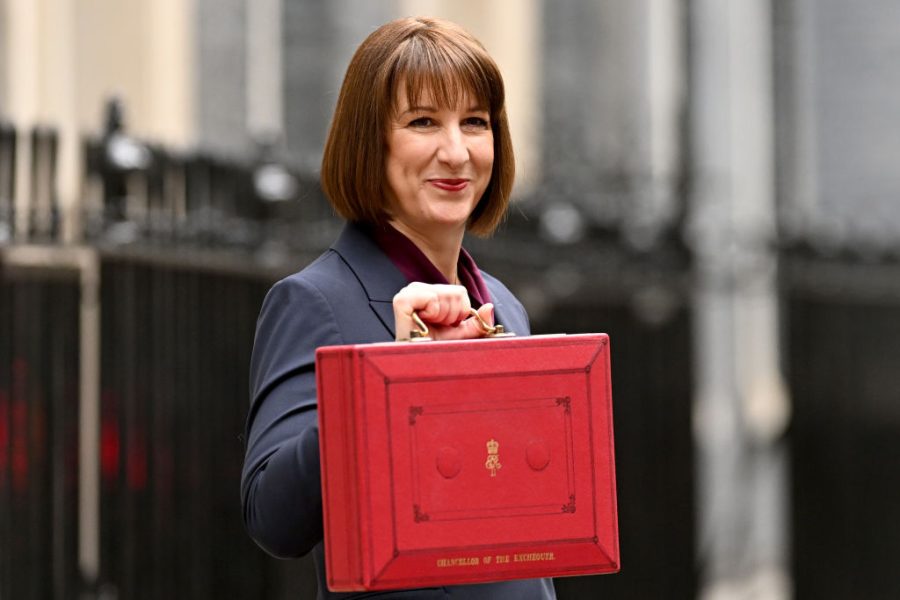Rachel Reeves didn’t want to surprise anyone with this Budget. She didn’t want to shock the markets, nor did she want any accusation that she had played fast and loose with the public finances. So by the time the Chancellor stood up in the Commons today, the bulk of her big decisions were already public knowledge, with just the details to come.
Still, that won’t make today’s fiscal event any less memorable – or painful. This Budget ushers in a new era: one where the tax burden sits at its highest level since the war, where tax hikes push more people out of the labour market, and where growth forecasts actually decline in the second half of this Parliament. Despite promising that more borrowing and public sector investment would lead to more economic growth, the assessment from the Office for Budget Responsibility shows, instead, an economy set for continued stagnation.
Labour’s biggest problem going into this Budget was expected to be a possible breach of its manifesto: hiking employer national insurance to 15 per cent (up 1.2 percentage points), after promising in their election manifesto to ‘not increase National Insurance, the basic, higher, or additional rates of income tax, or VAT'. That problem has become substantially bigger since the Office for Budget Responsibility (OBR) released its assessment of the tax changes. The decision to lower the salary threshold at which an employer starts paying the tax – from £9,100 per year to £5,000 – is expected to bring in roughly £25 billion for the Treasury.
But according to the OBR, it is also going to ‘reduce the participation rate by 0.1 per cent from 2025-26 onwards’. In practical terms, that means fewer jobs for the lowest paid workers. It’s not just a loss of opportunity for those looking for a job – it will make the party’s push to get the millions on out-of-work benefits back into employment an even more difficult task. It is also expect to reduce wages: the ‘indirect effect of the NICs measure’, the OBR says, ‘is to lower real wages and employment, though this is initially offset by the temporary boost to demand.’
This reduction in jobs does not look, according to the OBR’s calculations, to be offset with much hope that the Chancellor’s borrowing plans will really produce that long-term economic growth. ‘The only way to drive economic growth is to invest, invest, invest,’ Reeves said in her speech to the Commons. ‘There are no shortcuts.’
But what is this investment really going to amount to? According to OBR projections, growth will be weaker in the latter half of this Parliament. What rise substantially, however, are borrowing figures. Having further loosened the fiscal rules for more capital spending, Labour looks set to borrow £140 billion more over the course of this Parliament than the previous government was forecast to.
All eyes will be glued to the gilt markets in coming days, to see if investors are more convinced for Labour’s plans to borrow than the OBR – which expects gilt yields to be a quarter of a percentage point higher as a direct result of today’s announcements.
Reeves will be hoping the markets remain calm, despite her plans to borrow, with her attempt to offset this with a staggering £40 billion worth of tax hikes.The full set of changes in today’s Budget are estimated to take tax as a share of GDP to 38.2 per cent – significantly up from the 37.4 per cent that was forecast based on the (very small) number of tax pledges the party made ahead of the election. According to the OBR, the tax burden will be 5.1 per cent of GDP higher than before the pandemic.
As promised in the manifesto, VAT has been placed on private school fees, the windfall tax on energy companies has been expanded, and non-domiciled tax status has largely been ended. But as was expected – and explicitly warned about by think tanks like the Institute for Fiscal Studies during the election – these measures raise pennies (in Treasury terms). So Reeves ended up pulling some of the big tax levers to find extra revenue. In addition to the employer NI rise, the freeze on tax thresholds will remain in place until the end of this Parliament, dragging millions more into higher tax rates and paying tax all together.
Reeves has tried to frame today’s decision not to extend the freeze as keeping the party’s manifesto promise not to tax working people. Yet the freeze will continue to stay in place, not for one year, or two years, but for almost all of this parliament. ‘There will be no extension of the freeze in income tax and National Insurance thresholds beyond the decisions of the previous government’, the Chancellor said. ‘From 2028-29, personal tax thresholds will be uprated in line with inflation once again. When it comes to choices on tax, this government chooses to protect working people every single time.’ This is a huge tax increase for workers, including for some of the lowest paid people. It was part of the Tory plan to keep that freeze in place, but it is now a Labour government, who could have ended it in this Budget, choosing to do so.
Perhaps the most outstanding question as everyone begins to dig into this Budget is how it can be explained as a pathway to growth. It’s not a claim that seems borne by the assessment of the OBR. Can voters be convinced? The biggest risk for this landmark moment for Labour continues to be that pain is inflicted and the good times still don’t manifest. Perhaps that’s what the penny off the pint was for: something positive to point to, when there’s little evidence that their measures, in this Budget anyway, will lead to meaningful growth.
Graphs are from the Spectator’s data hub. View them all here.
Watch more on SpectatorTV:







Comments